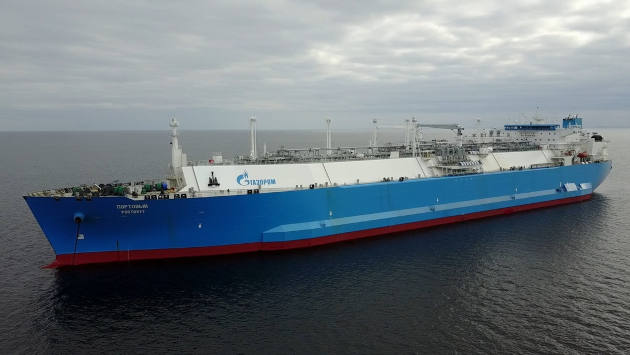Anticipated Surprises in the Shipping Industry for the First Quarter of 2025
Modern global shipping is significantly influenced by geopolitical instability and sanctions. Any escalation or de-escalation of conflicts can greatly impact economic prospects.
The industry is currently in a state of anticipation regarding the actions of the new Trump administration, which has threatened to implement a range of protectionist measures, raising concerns among experts about potential trade wars (mainly with China), a reduction in international trade, and higher inflation.
Tankers
Forecasts for Russian exports in 2025 are currently negative. However, despite this, raw material supplies to Europe from the Middle East, the US, and Latin America will continue to support demand for ton-miles and freight rates.
On the other hand, the fate of sanctions against Russia, Iran, and Venezuela remains uncertain, which could also be a turning point for this segment of the fleet. By the end of 2024, the volume of tanker construction orders increased, exceeding the 2023 figures by 33 %, reaching 50 million DWT (compared to approximately 36 million DWT in 2023).
Given the significant growth over the past three years, demand for ton-miles in 2025 is expected to normalize within the baseline scenario for both crude oil tankers and product tankers. The demand and stability of the tanker shipping market in 2025 will largely depend on China’s raw material import needs.
Bulk Carriers
Preliminary forecasts suggest that demand for bulk carrier shipping, as well as market supply, will grow moderately in 2025, leading to a balanced market. This, in turn, will help establish optimal freight rates.
China’s imports of iron ore, bauxite, and coal increased in 2024; however, weak domestic demand for these raw materials indicates that a significant portion of these supplies has gone into stockpiles.
The emergence of Guinea in the iron ore market, increased trade volumes between Brazil and China, and the rise in bauxite imports from Guinea to China are expected to support demand for ton-miles in the coming years.
The “green transition” will also influence demand growth. Various initiatives aimed at reducing emissions will increase the need for steel products, cement, and a range of other goods, including bauxite, copper, and nickel.
Transit through the Panama Canal normalized in 2024 due to rising water levels. However, the situation in the Red Sea remains a significant issue for international shipping.
Container Ships
The growth of container shipping continued in 2024 due to increased global trade volumes and longer transit distances. Demand for TEU-miles in 2024 rose by 16,7 %, with an average projected growth of 3,2 % per year for TEU-miles from 2024 to 2028.
Freight rates are expected to decline in 2025 as more vessels enter the market, with continued decreases in 2026-27, and a change in trend anticipated only in 2028. A decline in freight rates was already observed in the second half of 2024. The increase in vessel supply during the forecast period is expected to eventually exceed demand, despite the conflict in the Red Sea, affecting freight rates for vessels of all sizes.
Due to high freight rates, fleet ordering activity reached a record high, with nearly 4 million TEU ordered in 2024. With over 8 million TEU expected to enter the market in the coming years, an oversupply is anticipated. With the current EU ETS and tightening CO2 emission regulations, operating older vessels is expected to become increasingly costly, especially in light of the forecasted decline in freight rates. Starting in 2025, many of these older vessels are expected to be scrapped.
Here’s a summary in English:
Gas Carriers
In 2024, global LNG shipments increased. However, due to the lack of prospects for expanding specialized terminals until the third quarter of 2025, the growth of LNG exports from the US is expected to be only 3,9 % in 2025. From 2026 to 2028, the average growth rate is projected to be around 7,6 %.

Source: gazprom.ru
The net increase in the VLGC/VLAC fleet in 2024 was 11 %. Due to high order activity in recent years and an increase in the number of vessels delivered, a decline in freight rates in this segment is possible by the end of the forecast period, which could lead to reduced profits for companies.
In 2024, the average daily revenue from VLGC operations was approximately $43 000, which is expected to decrease to $41 000 per day in 2025, given the limited growth opportunities for US exports.
After a slight increase in 2026 due to plans for expanding gas terminals, a decline is anticipated.
Demand for liquefied petroleum gas (LPG) in the Asia-Pacific region continued to grow, with import volumes increasing by about 12 % in the first three quarters. US LPG supplies to China rose by 36 %, positively impacting transportation demand. It is expected that China will continue to increase its demand for raw materials during the forecast period. Demand for LPG also grew in India, with imports rising by 29 %, accounting for 27 % of total global demand.
In 2024, maritime ammonia trade decreased by 1,3 % in the first three quarters. However, it is forecasted that global ammonia trade will grow during the forecast period, largely due to ongoing projects for the production of blue and green ammonia worldwide.

